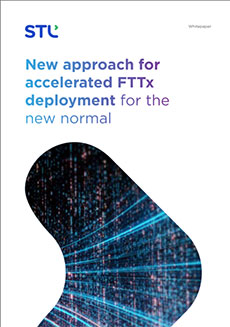Demystifying FTTx and the need for its accelerated deployment
Data is the new ‘fuel’. With millions of people working from home and family members spending more time streaming TV shows and movies, doing live video chats and watching live news, a new situation of internet overload has emerged. Residential environments have emerged as the new hubs of data consumption. Consequentially, there has been a shift in peak hours of consumption along with an increase in demand variability. This has brought the urgent need for hyperscale fibre connectivity and more importantly, FTTx to the fore. In this paper, we dive deep into the challenges of deploying FTTx and explore solutions to achieve the desired scale while focusing on cost and time efficiencies.
1 FTTx and the need for accelerated deployment
Internet usage has seen a dramatic increase – ~70% surge in global internet usage with at least a 12% surge in streaming. Regulatory frameworks and public incentives have been constantly promoting FTTH deployments as the preferred technology to provide high bandwidth and low latency to end points. Countries such as France, Germany, United Kingdom and India have already announced fibre as the preferred medium for Broadband Internet. Globally China, Japan, Russia, South Korea and the US are the top FTTH markets. In 2019 alone, U.S. broadband services providers and network operators have rolled out enough fibre to the home (FTTH) infrastructure to pass 6.5 million homes. The top drivers for rapid adoption of FTTx networks



